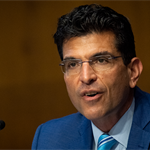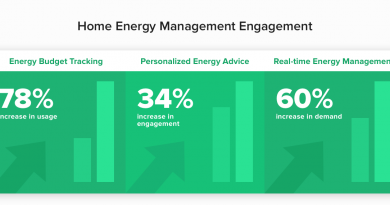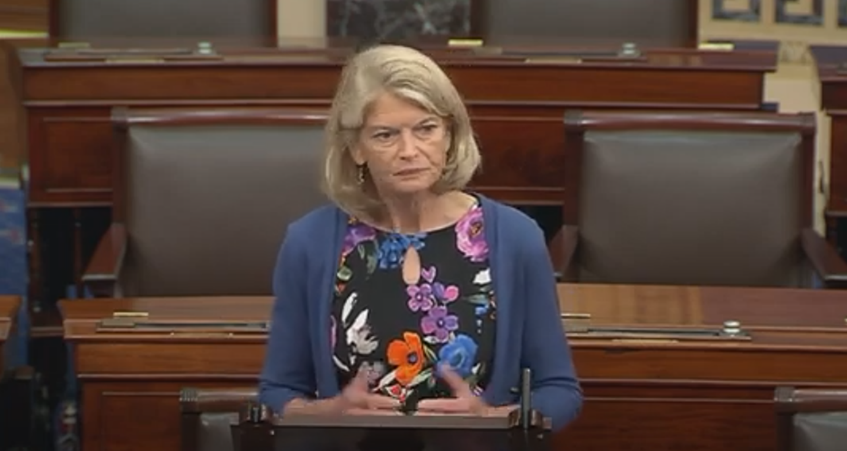From natural gas to geothermal: Audrey Shulman, HEET are fighting climate change – Washington Post – The Washington Post
Energy Disrupter

SOMERVILLE, MASS. — Audrey Schulman stood in the middle of the sidewalk, her eyes fixed on the gas detector in her left hand.
About this series
Climate Visionaries highlights brilliant people around the world who are working to find climate solutions.
It was mid-August, and she hovered above a steel grate alongside Highland Avenue in Somerville, Mass. The detector was connected to a black wand with a cupped end, which she pushed into the ground like a toilet plunger, taking a reading.
The contraption let out little poofs as it sucked in air and spat out numbers on a small screen. It was measuring methane, the primary component of natural gas. Methane can ignite at concentrations between roughly 5 and 16 percent — she was seeing 7.
“That’s explosive underneath my feet,” said Schulman, alarm in hand blaring. She called the gas company’s emergency line. The operator dispatched a truck and told her to “leave the premises immediately.”
Schulman is not an engineer or a scientist. By profession, the 58-year-old is a writer with five novels to her name, and a sixth set to publish next year. But she is also the founder and co-director of an environmental nonprofit called the Home Energy Efficiency Team (HEET). Founded in 2009, the organization has evolved from focusing on weatherizing buildings in the Boston area to putting an end to natural gas — a mission that could eventually reshape how the entire state and beyond gets energy.
[Housing in Alaska can’t survive climate change. This group is trying a new model.]
“It’s a system problem,” she said. “For me, gas is just an explosive substance that we should not be putting into homes and lighting on fire.”
The fervor behind Schulman’s push, however, rests only partly on safety concerns. Yes, manholes, houses and even entire towns have suffered horrific gas explosions. But even as she reported the leak on Highland Avenue, she explained that the call was largely precautionary — the space was most likely not big enough for a dangerous amount of gas to accumulate.
To her, the more persistent worry with a leak is that methane is an extremely potent greenhouse gas, which — when released directly into the atmosphere instead of being burned first — has more than 80 times the warming potential of carbon dioxide over a 20-year period.
Schulman’s introduction to the issue came in 2012, when she came across concerning reports of gas leaks in Boston. Her curiosity eventually led her to gather hundreds of pages of publicly available data on gas leaks across the state. She then recruited volunteers and spent months piecing together a groundbreaking statewide map of the problem. “It was just stunning,” Schulman said, of the approximately 16,000 unrepaired leaks she charted. “Nobody had known how many natural gas leaks there were.”
Schulman sent the findings to the Boston Globe, unsure if she would even get a response. On August 20, 2015, the story ran on the front page.
“This was the first time, as far as I knew, that anyone was able to provide a specific accounting of where these leaks were,” said David Abel, the journalist who received Schulman’s email and wrote the story. “I thought it was fascinating to see them plotted out on a map, which included leaks that were just around the corner from me.”
Zeyneb Magavi, who has known Schulman for over a decade and more recently joined HEET as its co-executive director, says the map was a catalyst. “People all over the state found their local gas leak.”
The public attention helped spur the state to pass a 2016 law requiring gas companies to fix leaks of “significant environmental impact,” even if safety wasn’t a concern. Since then, HEET has continued to map leaks and verify repair compliance. It estimates that gas companies have now fixed hundreds of these super-emitting leaks, along with thousands of smaller seepages.
But many more remain, and Schulman knows that chasing them is both an incomplete fix and no doubt futile. The job will only become more difficult as gas pipes — some of which date back to the 1800s — continue to age. That’s why she’s also been at the forefront of finding a way to transition off natural gas entirely.
HEET proposes replacing the fossil fuel with a first-of its kind, utility-run geothermal grid. While some people — including former president Barack Obama — have pitched natural gas as a “bridge” fuel in the move to a low-emissions future, Schulman says “we’ve reached the end of the bridge. We want the off-ramp.”
Mapping the leaks
The heroine of “The Cage,” Schulman’s first novel, published in 1992, is named Beryl Findham. She’s a photographer on an Arctic expedition to document polar bears; megafauna are a recurring theme in Schulman’s writing. While on her journey, Findham imagines a future where global warming encroaches on the landscape, people and animals.
Any foreshadowing of Schulman’s future work, though, was probably unconscious. While she is a vegetarian and didn’t have a car at the time, she says she viewed climate change as “something horrible that was going to happen to the planet that wasn’t going to happen to me.” But that shifted in 2000 when she gave birth to her first child — a boy.
“I started to move from thinking about climate change in my life span to his life span,” said Schulman. “To hold a baby in your arms and think about that made me an angry, mean person. I wanted to shoot every SUV I saw.”
[The Climate Museum is the first of its kind in the U.S. — and its founder is on a mission]
Over the following months and years, Schulman found herself lecturing friends and family about the climate, bombarding them with statistics and doom. “My older sister said I was giving her a stomach ache every time I saw her,” recalled Schulman. “I thought, this wasn’t helping.”
Searching for a more constructive outlet, Schulman attended a meeting in 2008 with a group of neighbors also looking to take action. She proposed improving home energy efficiency as one place to start, and when people voted on which idea to pursue, hers won.
By 2009, Schulman had formed HEET and was organizing house-by-house energy-efficiency parties. Teams of volunteers would work to seal, insulate and otherwise upgrade people’s homes. Walking a radius of just a few blocks from her doorstep, she points out about half a dozen homes she helped weatherize.
“At the height we were doing about one a weekend,” she said. “Emotionally, it was curing.”
Within a few years the effort had graduated from houses to churches, nonprofits and other, larger entities. It was part of Schulman’s seemingly insatiable search for ways to have an even greater impact.
Then in late 2012, Schulman heard about researchers who had found more than 3,000 natural gas leaks in the Boston area. The report shocked Schulman, who would bike past a “really bad smell of gas” on one of her routes. But until the study, she said, “I didn’t know it was methane. I didn’t know it was a greenhouse gas. I didn’t know anything.”
Schulman reached out to the researchers to help map the many methane leaks in her neighborhood. And in early 2015, after Massachusetts passed a law the previous year requiring that gas companies disclose leaks, she quickly tracked down lists for the entire state.
The data, however, was virtually unusable.
Schulman pulled out her laptop and scrolled through the files to demonstrate their impracticality — pages of tiny, unsearchable font blurred across the screen. It took her and her recruited volunteers an entire summer to figure out how to turn the messy PDFs into a spreadsheet and ultimately the first statewide map of natural gas leaks.
“We did this really intensive mapping study in the city of Boston,” said Nathan Phillips, a Boston University professor and author of the study that originally sparked Schulman’s interest. “She took that and scaled it up to the state.”
HEET’s map currently displays over 14,000 active leaks, about 1,000 of which are super-emitters. And while Phillips says those numbers are “eyebrow-raising,” he adds that the gas company leak lists are probably a drastic undercount of the problem.
A 2019 study found that five urban areas along the Eastern Seaboard leaked a combined 890,000 tons of methane — more than double what the Environmental Protection Agency’s greenhouse gas inventory reported. And another study found that nationally, the EPA inventory could be underestimating the problem by 60 percent.
“We should be moving away from natural gas as quickly as we can,” said Bob Howarth, a professor at Cornell University and among those also raising the alarm about methane leaks. “We really shouldn’t be burning natural gas 15 years from now, period.”
‘From triage to transition’
While driving near Schulman’s house, a stench wafted through the rolled-down windows of her electric car. The odor was mercaptan, a scented gas producers add to natural gas so humans can smell leaks. And along this section of Nonantum Road, it was noticeable for thousands of feet.
She pulled over to see if her gas-rover could pinpoint a source of the escaping methane. Walking alongside the road, she plopped the plunger down every few feet to check. No luck. The recent rain may have been making it harder to detect, she said. She did, however, point to patches of browning grass.
[Why we shouldn’t give in to climate despair]
“You can see a burn mark here,” she said, explaining that methane leaks deprive the soil of oxygen, which kills off grass, shrubs or even trees. Although she suspects this area contains a super-emitting leak, there are none officially identified. That means methane could keep spewing here for years.
It’s problem spots like these that have led Schulman, and HEET, to conclude that natural gas is a dead end. “We were like, damn, we need to do something to get us off gas,” she said. “We moved from triage to transition.”
Magavi, HEET’s co-executive director, suggested one possible path off natural gas: replacing it with geothermal heat pumps, which extract heat via bore holes drilled into the ground. When she had explored the idea for her own home, it was prohibitively expensive unless her neighbors were also interested. They weren’t. So, she thought, what if utilities footed the upfront costs for the system and recouped them through ratepayers?
“The more houses you interconnect, the more efficient the installed infrastructure can be,” said Schulman, who loved the idea. And, she calculated, Massachusetts utility companies were already slated to spend billions of dollars on updating gas infrastructure — perhaps the money could just be redirected.
“It’s old infrastructure,” she said, “We don’t want to replace it with something we won’t use.”
Cary Smith is a geothermal expert with the GreyEdge Group and has been consulting with HEET on its concept. He doesn’t know of any other such projects that would be done with the utility company taking the lead. But, he said, there are plenty of existing systems that indicate the technology is both feasible and cost-effective.
Among the largest comparable installations in the United States is at Colorado Mesa University. The system uses the ground temperature, which in that area stays at about 54 degrees Fahrenheit year-round, to heat the campus during winter and cool it in the summer. It does this via seven fields of drilled wells and 171,000 feet of pipe, which circulate water in a closed loop as a way of transferring the ground’s energy.
When a building needs to be heated, a heat pump pulls warmth off the water loop, and when it requires cooling, the pump expels warmth into the water loop. As the water is circulated back through the well fields and goes deep underground, the temperature moves back toward 54 degrees, and the loop begins again.
The university installed the system in 2007, and Smith, who was involved in the project, says it saves more than $1 million annually. And although there is a backup heat source when necessary, he said, “we haven’t fired a boiler in a little over 12 years.”
To bring geothermal to Massachusetts homes and businesses, HEET proposes replacing existing gas lines with closed water pipe loops and bore holes. One of Massachusetts’s largest natural gas providers, Eversource, wants to pilot the idea on roughly 100 units and has been sorting through applications for the initial installation.
“This idea came from [HEET], and we’re advancing it,” said Bill Akley, the president of Eversource’s gas business, who acknowledged that the technology could eventually supplant a significant portion of the company’s natural gas network. But, he said, that’s okay. “One displacing the other is not a scary proposition. It’s an exciting proposition.”
The company is set to finalize its plans this fall and start construction next year.
The move toward geothermal
Walking along Highland avenue, a block or so down from where Schulman found the gas leak, she stopped and gestured across the road. “The main is on the other side of the street,” she said. “That’s where the bore holes would go, and the closed loops.”
This stretch of Somerville is among the 17 sites that Eversource says it’s considering for the pilot project. Magavi has talked with the owner of a multiunit apartment on one end of the proposed site and the YCMA at the other, and both are eager to participate. If selected, more buildings along the route could also join.
Schulman would eventually like to see her home in Cambridge on the geothermal grid, as well.
Her house sits about halfway down the block and has seen many of Schulman’s environmentally friendly touches. She’s sealed the doors, changed the windows and checked most every other efficiency box available. On the side wall nearest the driveway hangs the charging station for her car. Her kids even named the family’s white-and-gray Shih Tzu “Tesla.”
In a twist of misfortune, though, Schulman’s home is still heated with natural gas. She had been aiming to make a change, but a few years back she detected a gas leak in the house. It was coming from the basement, where her son slept, and remains the largest indoor leak HEET has ever seen. Facing an emergency, she had no choice but to replace her heating system in kind.
In another blow, Eversource upgraded the gas pipes on her street this summer. Standing on the road outside her house, Schulman reads the company’s seemingly cryptic yellow markings on the freshly patched pavement — a skill she’s honed with experience. A four-inch diameter main pipe, with 1.25 inch services to each house, she interpreted — all plastic.
“How much longer is it going to last?” she asked, with a rhetorical sigh. She knows the new infrastructure may mean that natural gas is baked into her life for decades. But she also knows that with so much old pipe still in the ground elsewhere, there’s hope. And if a geothermal grid works in the extremes of Massachusetts winters, she says, there’s no reason it shouldn’t be successful elsewhere, as well.
Wherever Schulman’s quest to end to natural gas leads, it’s certainly gripped her.
“It gets more and more interesting,” she said. “Next thing you know, it’s changed your life.”
About this story
Original Source: https://www.washingtonpost.com/climate-solutions/interactive/2021/change-natural-gas-audrey-schulman/
















